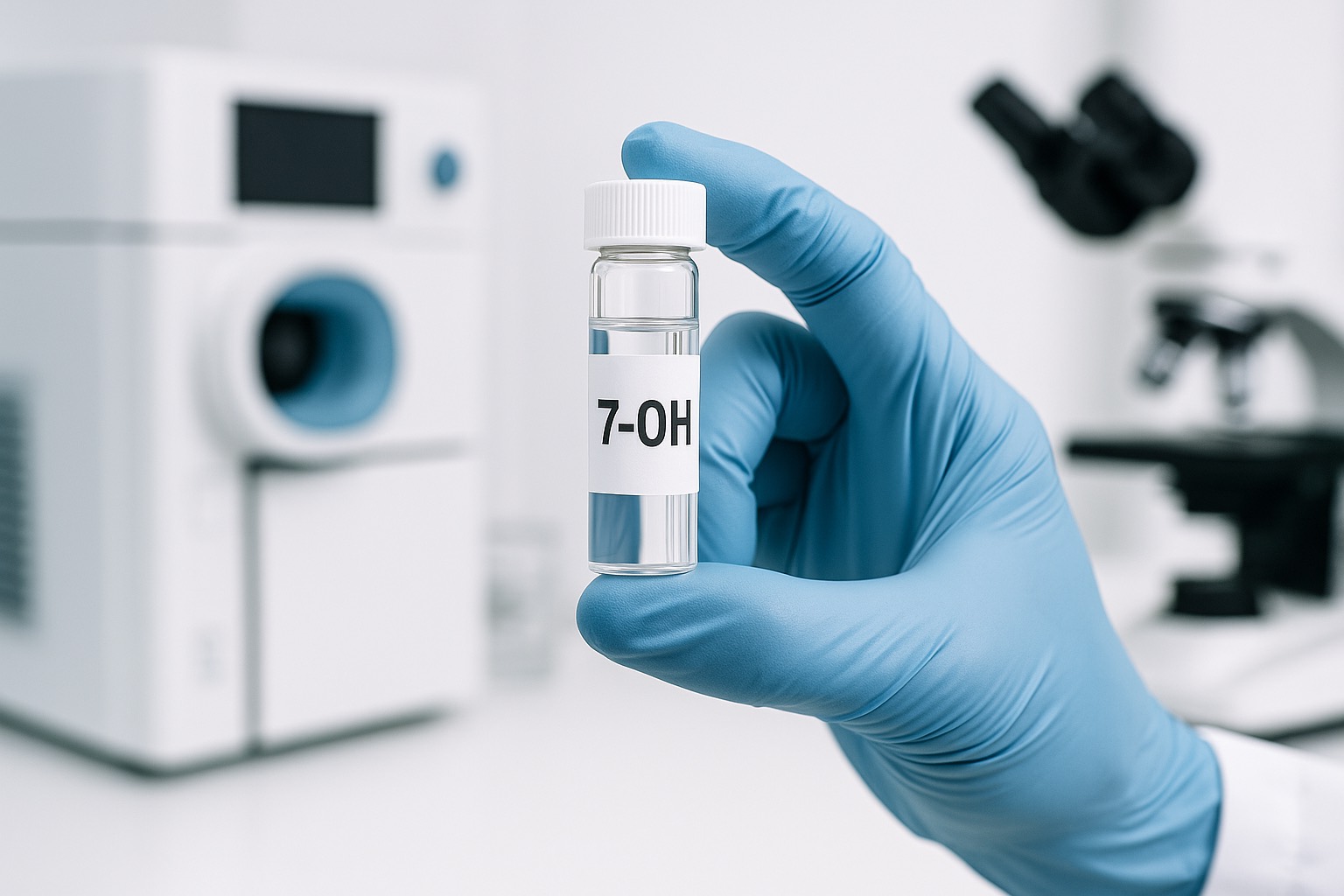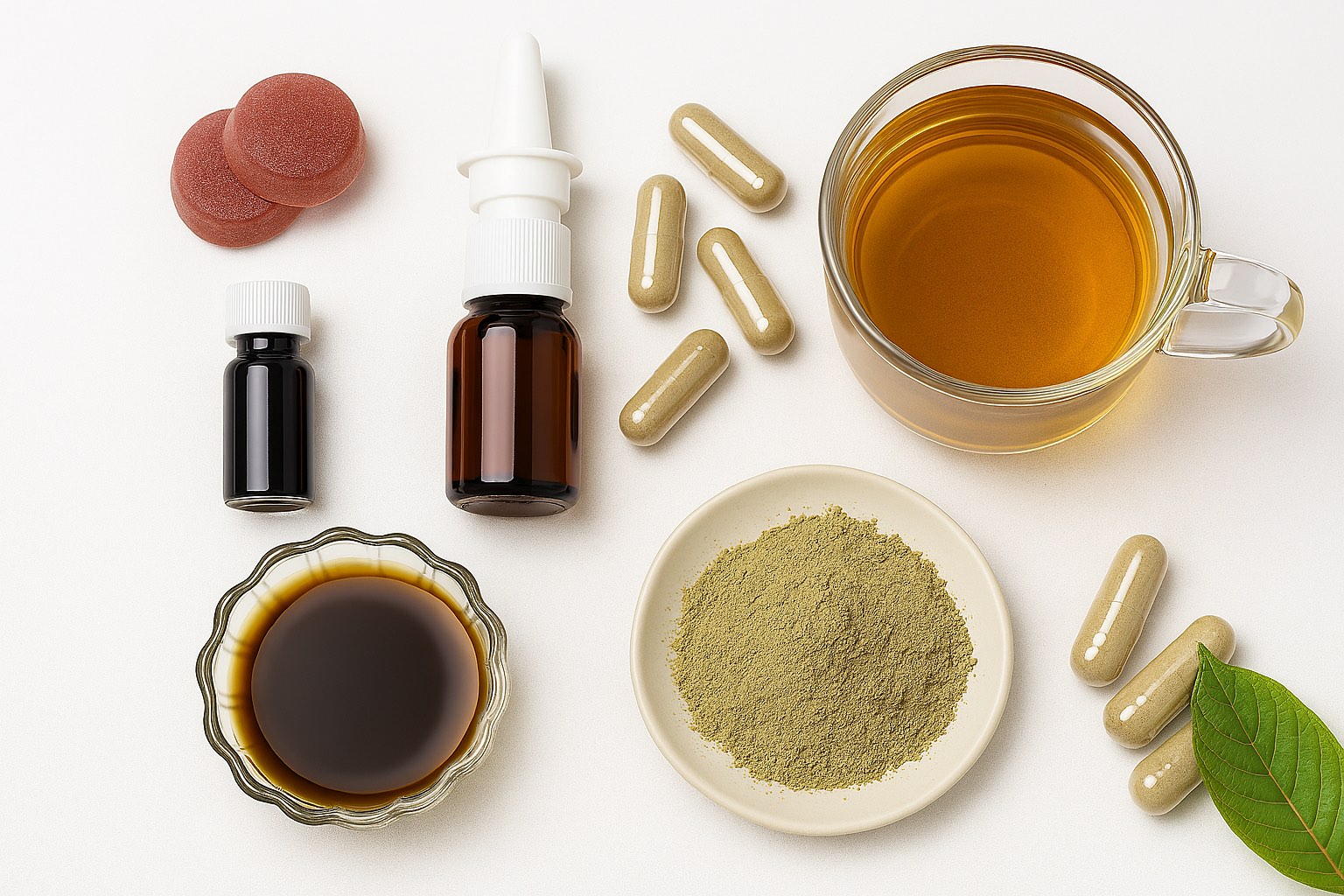How is 7-Hydroxymitragynine similar to Opioids?
7-hydroxymitragynine (7-OH) is a potent kratom alkaloid that delivers morphine-like effects. The compound is increasingly popular because of its pain-relieving, stimulating, and euphoric properties. Some experts even think 7-OH could help alleviate opioid dependence and withdrawal symptoms. But does that mean 7-Hydroxymitragynine is 100% safe compared to morphine?
This article compares 7-hydroxy in kratom to morphine, including effects, risks, and addictive potential.
What is 7-Hydroxymitragynine?
7-hydroxymitragynine (also called 7-OH mitragynine, 7-OH, and 7-HMG) is the active metabolite of mitragynine, kratom’s principal psychoactive alkaloid. The body processes 7-OH in such a way that it is highly potent in small concentrations. A Columbia University study confirmed that it contributes significantly to kratom’s effects, like increasing euphoria and reducing pain.
7-hydroxymitragynine products are readily available in health food stores, vape shops, and online specialty stores.
7-OH is powerful in small doses—ACS Laboratory tests this kratom alkaloid to ensure consistent potency, safety, and trust in every product.
7-Hydroxymitragynine vs Morphine: Similarities and Differences
Experts consider 7-Hydroxymitragynine an opioid-like substance because of how it interacts with brain receptors.
Similarities with morphine
7-hydroxymitragynine and morphine both act as full opioid receptor agonists, or substances that activate mu-opioid (μ-opioid) receptors. A μ-opioid receptor is dominant in controlling pain transmission, which is why morphine is regularly prescribed for severe pain. Both compounds also induce euphoria and sedation, depending on the dose. They can also lessen the anxiety and stress caused by pain.
Differences from morphine
7-hydroxymitragynine and morphine exhibit several differences, especially in potency, the other receptors they affect, and their approved use.
Potency: 7-hydroxymitragynine is stronger in terms of its effects on opioid receptors, with research findings suggesting it is approximately 13 times more potent than morphine.
Receptor interaction: Researchers note that 7-hydroxymitragynine and other indole alkaloids in kratom are structurally and pharmacodynamically distinct, referring to them as atypical opioids to distinguish them from their opioid counterparts like morphine.
For example, 7-hydroxymitragynine selectively inactivates other opioid receptors, showing antagonist activity at κ- and δ-opioid receptors, with multimodal effects at other central receptors. Selectively inactivating opioid receptors can explain the partially overlapping but non-identical effects between 7-hydroxymitragynine and morphine, such as differences in withdrawal symptoms.
Federal Legality: The DEA lists kratom as a “drug of concern.” However, the US government does not regulate the plant or 7-hydroxymitragynine as controlled substances. Morphine, on the other hand, is a Schedule II narcotic under the Controlled Substances Act, defined as a drug with a high potential for abuse yet approved in supervised medical settings nationwide.
States Legality: Kratom’s regulatory status changes at the state level. Several places, including Alabama, Arkansas, Indiana, Rhode Island, Vermont, and Wisconsin, have banned the plant entirely, making 7-OH-mitragynine illegal in those places for any use.
Benefits of 7-Hydroxymitragynine
People have ingested kratom-derived 7-OH for hundreds of years in Southeast Asia as a natural home remedy to treat ailments, including:
- Fatigue
- Pain
- Diarrhea
- Muscle cramps
Proponents also argue that kratom offers a viable alternative to traditional opioids like morphine, with fewer risks and significant potential for managing pain and addiction.
A novel opioid agonist
7-hydroxymitragynine could be safer than morphine because it is a novel (new) opioid agonist. This feature means it acts like methadone by binding to opioid receptors but with distinct properties. Instead of fully activating opioid receptors, 7-OH is a partial opioid agonist. Thus, it provides effective pain relief without inciting the same level of reward or pleasure, which triggers addiction. Partial binding also reduces the risks of respiratory depression, which causes morphine overdoses.
However, a partial agonist can still have high potency, meaning it binds effectively to the receptors and activates them at lower concentrations.
- Studies indicate atypical μ-opioid receptor agonists like 7-hydroxymitragynine are effective against morphine-resistant interactive pain. They may also produce analgesics better than morphine while being safer and less addictive.
These properties can help people wean off opioids, effectively lowering their opioid use and easing withdrawal symptoms.
Potential Risks of 7-Hydroxymitragynine
The caveat to 7-hydroxymitragynine’s benefits is that such advantages depend on dosage and ingestion methods.
Within the context of whole kratom leaves and extracts, 7-OH appears to have milder withdrawal symptoms and a lower addictive profile than morphine. However, at potent concentrations, 7-hydroxymitragynine can activate the reward center, causing similar euphoria that leads to misuse.
Data from online surveys, residential drug treatment programs, and case reports suggest that US kratom users perceive addiction to kratom as mild in severity. However, concentrated chronic use of 7-OH isolate can still cause addiction, tolerance, and withdrawal symptoms.
- In a study using pure 7-hydroxymitragynine, researchers found that mice became tolerant to its pain-relieving effects, similar to how they develop tolerance to morphine. This means the mice needed higher doses over time to get the same pain relief. The study also showed that if mice were already tolerant to 7-hydroxymitragynine, they were also tolerant to morphine, and the reverse was true as well.
- According to a report from the Centers for Disease Control and Prevention, kratom was the cause of 91 overdose deaths from July 2016 to December 2017.
The Bottom Line
7-hydroxymitragynine is a potent opioid-like compound that draws many comparisons to morphine for its mechanisms and effects. Research indicates that 7-OH acts as a partial opioid agonist, which typically makes it safer than morphine. However, those benefits may only be applicable when consumed in whole plant form at appropriate dosages.
Kratom brands must be aware of 7-OH’s nuanced effects to create safe and effective products that raise the bar on industry quality.
Kratom products containing 7-OH require precision—contact ACS Laboratory to discuss advanced testing for potency, safety, and regulatory confidence.


.jpg)






.png)




.png)
.png)
.png)
.png)